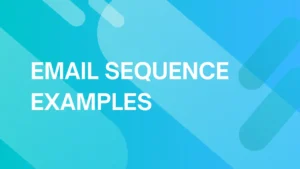
Simple Message Transfer Protocol (SMTP)
For marketers looking to optimize their email campaigns, understanding how Simple Mail Transfer Protocol (SMTP) works is essential. This article looks into the key aspects of SMTP, covering its role in sending and receiving emails efficiently. You’ll learn:
- How SMTP differs from other email protocols like IMAP and POP3, and why that matters for your campaigns
- How SMTP functions in the context of email marketing
- The critical role of SMTP servers in email delivery success
How is SMTP Used?
SMTP simply provides a set of codes that simplify the communication of email messages between email servers and users’ computers. Therefore, when a user sends out a message, it’s turned into strings of text that are separated by the codes that identify the purpose of each section.
SMTP provides these codes and email server software is designed to understand what they mean. Because SMTP turns a message into a string of text, it is unable to transfer text only. It is therefore not able to handle fonts, graphics, attachments, and other elements of the email message.
For this reason, MIME or Multipurpose Internet Mail Extensions were created to encode all non-text content into plaintext. In that way, SMTP is able to transfer the data as it is intended.
While sending one email is fairly simple, for larger organizations that send thousands of mails for, for instance, marketing or transactional purposes, the SMTP process can get a much more complicated and requires SMTP relay service and custom heaters for multiple recipients.
Why is SMTP Important?
SMTP is important because it provides a common set of guidelines and rules for messages that can be transferred from one user to another user by way of email. Essentially, SMTP is the only way any email can be sent from one email client to another email client through an email server.
As such, it provides a secure environment for sending emails, ensures consistent sending and deliverability, and allows organizations to send bulk emails when they rely extensively on the sending of emails in their business, like for marketing or sales purposes.
| Tip: Make sure to check out our article about Message Transfer Agent (MTA) as well! |



